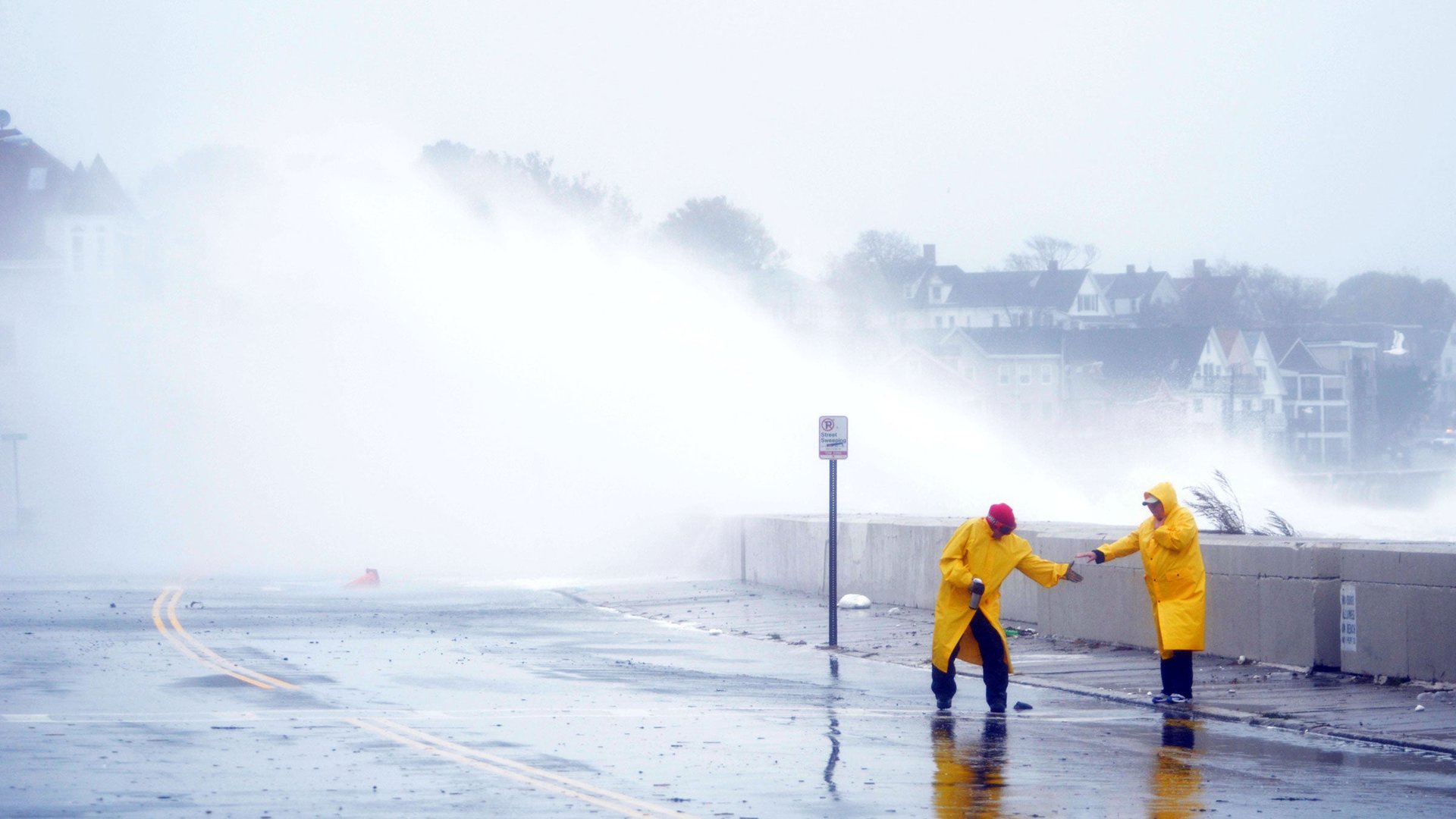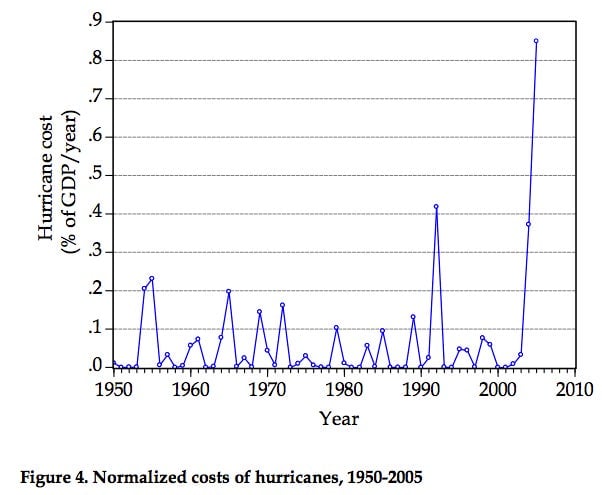How much will Hurricane Sandy cost the US economy?
Hurricane Sandy, the largest storm north of the Carolinas in US history, is still bearing down on New England with its full might. The economic consequences of the storm are already clear as you walk (or canoe) the streets of any major northeastern city. Shops are shuttered, windows are X’d with blue tape, streets are deserted … and those are the lucky cities. Less fortunate are places like Battery Park, NYC, or Atlantic City, where the the streets look more like long intersecting swimming lanes.


Hurricane Sandy, the largest storm north of the Carolinas in US history, is still bearing down on New England with its full might. The economic consequences of the storm are already clear as you walk (or canoe) the streets of any major northeastern city. Shops are shuttered, windows are X’d with blue tape, streets are deserted … and those are the lucky cities. Less fortunate are places like Battery Park, NYC, or Atlantic City, where the the streets look more like long intersecting swimming lanes.
That makes it sound like the economic consequence of a storm is purely negative. But it’s not that simple.
In a snapshot of a storm slamming into a major metropolitan area (like above), all you see is destruction. But that ignores the economic activity necessary to prepare for and recover from a disaster. In fact, storms can stimulate, in two ways.
First, the threat of a dangerous event pulls economic activity forward. Families stock up on extra food and supplies to prepare for a disaster. Second, and much more significantly, the aftermath of storms requires “replacement costs” that raise economic activity by forcing business and government to rebuild after a destructive event.
Then again, there is all of that destruction. Experts placed the total property damage of Hurricane Irene at about $8 billion. This storm is projected to be considerably worse.
In New York City, perhaps the worst-case scenario is the flooding of the subway system, an event one source gave a 30% chance. Klaus H. Jacob, a scientist at Columbia University’s Earth Institute, said Hurricane Irene’s surge of water came just one foot short of a monster flood of New York’s transportation system:
If the surge had been just that much higher, subway tunnels would have flooded, segments of the Franklin D. Roosevelt Drive and roads along the Hudson River would have turned into rivers, and sections of the commuter rail system would have been impassable or bereft of power, he said.
In the event that the subway tunnels under the Harlem and East Rivers were out for more than a month, the economic cost could be $55 billion, Jacob told the New York Times just this September.
That figure alone is equal to half the estimated property damage of Hurricane Katrina — and more than every other hurricane in U.S. history.
THE ECONOMICS OF HURRICANES
When it comes to hurricanes and property damages, Katrina stands alone.
The average cost of a year’s worth of hurricanes on the US economy in the last 80 years is 0.062% of GDP — or just under $10 billion in today’s dollars, according to “The Economics of Hurricanes in the United States,” which looked at property damage. That’s quite small. The nine most destructive hurricanes in US history not named Katrina — all since 2001, except for Andrew in 1992 — cost between $9 and $30 billion. The estimated impact of Hurricane Katrina was nearly $100 billion.
Here’s a chart from the same paper of total hurricane cost as a share of GDP, by year.

But even despite its tragic loss of life and homes, Katrina might have added to the region’s economy in the long-term, according to Keith Hembre, chief economist at Nuveen Asset Management. “You can look back on impact of Katrina, in immediate aftermath, there was an economic downturn in a number of data points,” Hembre told CNN. “Ultimately the rebuilding activity ended up being stimulative.”
With storms and property damage, location matters more than wind speed. Americans have been moving in greater numbers to coastal cities. What makes Sandy so potentially costly is not merely its size but its trajectory. The line of cities stretching up the northeast from Washington, DC, to Philly, NYC, and Boston, is the most densely populated stretch of 500 miles in the US. By Sunday evening, nearly one million residents of Connecticut, New York City, and New Jersey had been ordered to evacuate.
Although the storm is projected to bend its way around Manhattan, passing through New Jersey before looping around the New England, Mayor Michael Bloomberg has already announced that the subway system will be closed Monday and Tuesday, at the very least. Beyond the property damage, it’s the lack of business that has the biggest chance to impact GDP. Every day, the New York City economy produces $3.5 billion in gross metropolitan product. Some of that activity — like groceries — can be made up before and after the storm. Other industries, like restaurants, probably won’t get much of a boomerang effect when New York is dry again, since families tend to eat only one dinner a night.
It’s too soon to have any idea what Hurricane Sandy will do to the homes, shops, and boardwalks along the northeast. On an individual basis, of course, a hurricane can be devastating. But for the overall economy, history suggests they usually don’t leave much of a mark.